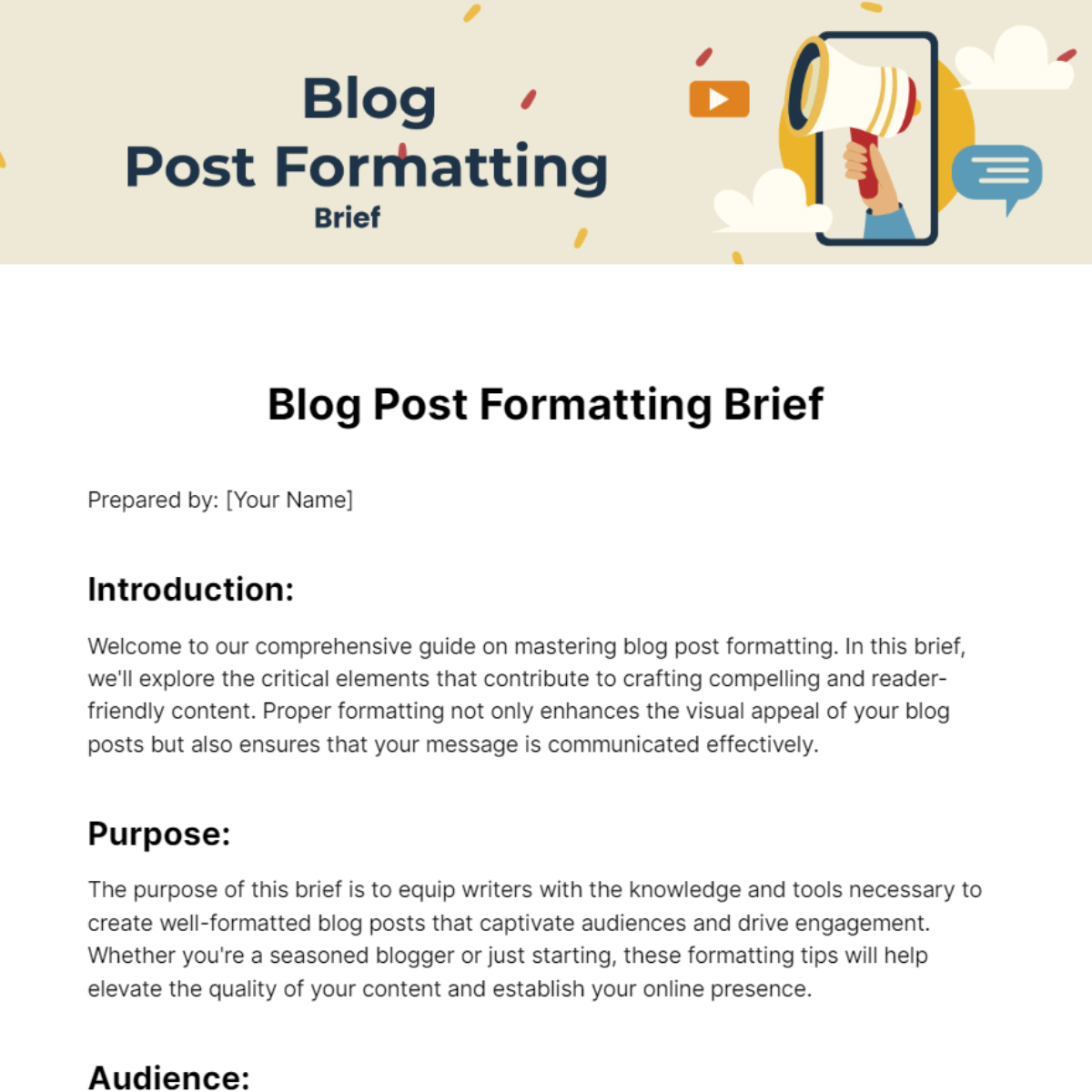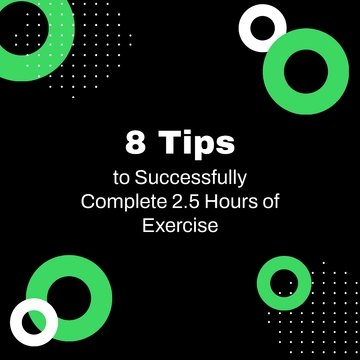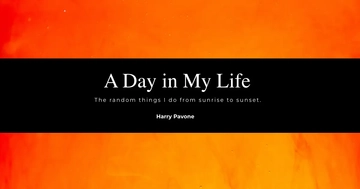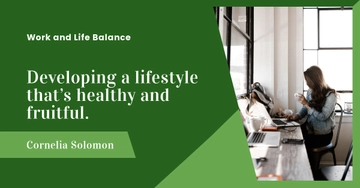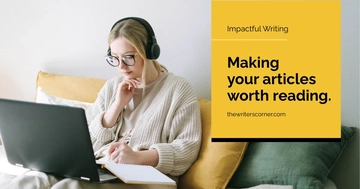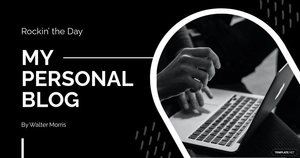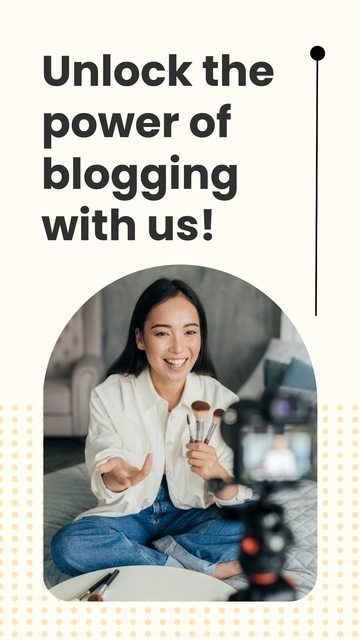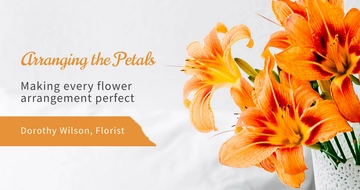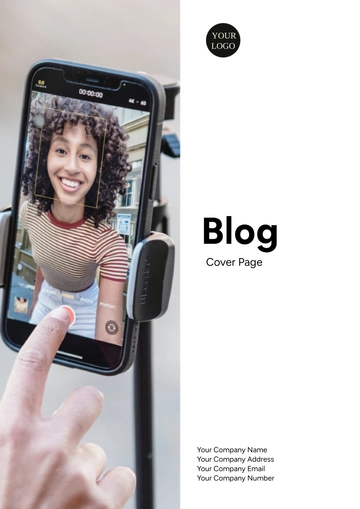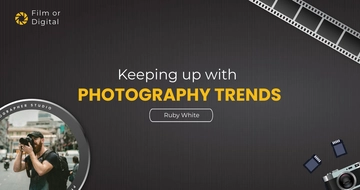Blog Post Formatting Brief
Prepared by: [Your Name]
Introduction:
Welcome to our comprehensive guide on mastering blog post formatting. In this brief, we'll explore the critical elements that contribute to crafting compelling and reader-friendly content. Proper formatting not only enhances the visual appeal of your blog posts but also ensures that your message is communicated effectively.
Purpose:
The purpose of this brief is to equip writers with the knowledge and tools necessary to create well-formatted blog posts that captivate audiences and drive engagement. Whether you're a seasoned blogger or just starting, these formatting tips will help elevate the quality of your content and establish your online presence.
Audience:
This guide is tailored for bloggers, content creators, marketers, and anyone else looking to improve the impact and readability of their blog posts. Regardless of your level of experience, you'll find practical insights and actionable advice to enhance your writing style and connect with your audience more effectively.
Sections:
Structure:
Introduction: Begin with a compelling hook to draw readers in.
Body: Organize your content into clear paragraphs or sections to maintain coherence.
Conclusion: Summarize key points and provide a strong call to action to encourage reader engagement.
Typography:
Font: Choose a clean and readable font style, such as Arial or Times New Roman.
Headings: Use hierarchy by employing clear headings and subheadings to guide readers through your content.
Paragraphs: Keep paragraphs concise and well-spaced to enhance readability and comprehension.
Visuals:
Images: Incorporate relevant and high-quality images that complement your written content and break up large blocks of text.
Infographics: Present complex information visually through infographics to improve understanding and retention.
Videos: Embed videos to provide additional context or demonstrate concepts discussed in your blog post.
Accessibility:
Alt Text: Include descriptive alt text for images to ensure accessibility for visually impaired readers.
Text Formatting: Avoid excessive use of italics, underlines, or all-caps, as these can hinder readability and accessibility.
Color Contrast: Ensure sufficient contrast between text and background colors to accommodate readers with visual impairments.
SEO Optimization:
Keywords: Integrate relevant keywords naturally throughout your content to improve search engine visibility and ranking.
Meta Description: Craft a concise and compelling meta description that accurately summarizes your blog post and entices readers to click.
URL Structure: Use descriptive URLs containing targeted keywords to improve search engine indexing and user experience.
Conclusion:
Mastering blog post formatting is essential for creating engaging, reader-friendly content that resonates with your audience. By implementing the formatting tips outlined in this guide, you'll enhance the visual appeal, readability, and accessibility of your blog posts, ultimately driving greater engagement and success.
Call to Action:
Start applying these formatting strategies in your next blog post and experience the difference it makes in capturing your audience's attention and achieving your blogging goals. If you need further assistance or have any questions, don't hesitate to reach out to our team of experts. Happy writing!
Brief Templates @ Template.net
